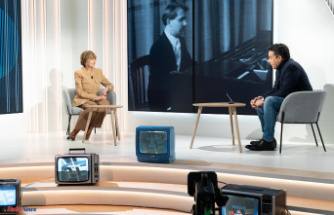"Tell me something about yourself..." - anyone who is confronted with this sentence in a job interview quickly finds himself reeling. It becomes easier with the right preparation. What matters?
Likeable, competent and self-confident: It is often not that easy to make a lasting impression in an interview. Five tips:
1. Prepare well. But how?
The preparatory work for the interview should primarily deal with the question: What information is available about the desired position and the employer? Applicants should collect as much information as possible.
"I would always see if I might know people who work in this company. If the opportunity arises, I would even contact the future employer," advises Silke Hell, systemic coach and scientific personnel developer at the University of Konstanz.
At the same time, it helps to think about what the potential employer will probably ask. You can then prepare for that as well. Preferably with examples, says careers advisor Silke Koppitz. She also advises avoiding memorized answers.
Also not optimal: speak in phrases. If someone says they are ambitious, they would also ask for concrete examples and situations, says recruiter and careers consultant Stefanie Krahl.
2. Reach your goal with structure
Usually, the self-presentation does not last much longer than three minutes. Important: The facts from the CV should be tailored to the desired position and employer. "They did a requirements analysis. They know what they want from an ideal male and female candidate," says Silke Hell. A mind map or table is suitable for structuring this beforehand. In it, the previous professional tasks are compared to the required ones.
Another approach can be to divide the presentation into three large areas, says Silke Koppitz. "In the first one you name the relevant highlights from your CV again. Then you talk about what you know about the position that is advertised. At the end you summarize why you are particularly well suited for the position."
3. Drumming for yourself: Watch out for body language
"Modesty is an ornament, but you have to drum it up a bit in the interview," says author and business journalist Angelika Rodatus. It starts with how applicants enter the room. "Of course I'm going in with confidence."
When sitting, you should ensure an upright and comfortable posture. The hands are visible on the table and the feet are touching the floor. "It's about being authentic and about how you react to certain situations," says Stefanie Krahl, who also wrote a book ("Where do you see your greatest weaknesses?") on the subject.
4. Think about technical pitfalls
Interviews via Zoom, Skype or teams are now part of the application process. That has become standard, says Silke Koppitz. With all the pros and cons. Applicants are usually in their usual environment. That creates security. Small sticky notes on the monitor can provide additional assistance.
But: The technology absolutely has to work. So: Try out the appropriate conference system before the call. Are the camera and sound working? Is the light ok? What does the background of the image look like? Are the internet and power connections stable?
5. Don't remain too passive
Interviewers also attach importance to questions from the candidates in the job interview. But there is no point in asking standard questions. You can do without what you could have googled in advance anyway, says Silke Koppitz.
Instead, she proposes two thematic blocks. One focuses on information. What else does it take to be able to make a clear decision about the position? These could be questions about the management style or the functions of the position.
The other block concerns questions about what the employer expects. "What is required in the first few months and what factors are used to measure success?" Koppitz explains.












